Applied Arts
An Interview with Arley Marks
from A New York Conversation
from A New York Conversation
by Dena Yago, Mary Manning
April 2023
Artist and business owner Arley Marks (of Arley Marks Drinks, MAMO) creates playful, experimental beverages and constructs the contexts for their enjoyment — from sculptural fountains to color tableware. Known by the NYC creative community for designing drinks menus and concepting the spaces for seminal bars, restaurants and social spaces such as Honey's, Dimes and Mission Chinese Food, here we discuss a richly multivalent practice that brings the outside world in. Marks talks us through his deeply rooted practice, from urban foraging and sensorial translation in the expanded liquid field. On a recent episode of Dena Yago’s Montez Press radio show, "New York Conversation," Yago and Arley sit down to discuss his practice.

Photo by Mary Manning
Dena: Our listeners might know you from Honey's—or from Dimes and Mission Chinese before that where you designed the drink programs there. How else might we have encountered your work over the years?
Arley: Honey's is a big one. We opened that place in 2016. I was there every day for the last six years and have kind of stepped back a little bit more recently. Something else is the glassware I've been designing with my long, longtime friend, Jonathan Mosca, who also lives down on East Broadway. We started a little glassware design company [ Mamo ] as an output from my cocktail practice, wanting to make a vessel to then put the drinks into.
I was doing a lot of really high end cocktail events for art and fashion clients in New York, and we would always come to the same point in the conversation when it came to budget about which glass we were going to use, and it always went with the lowest common denominator glass that could be used for a water glass on the table, but also wine and then cocktails. We wanted to make something that would be a more beautiful pedestal for a thoughtful drink.
In your work and in the drinks that you make, there's always a very material, textural aspect to it. So I feel that it has, in some ways, felt very organic that you would go into the vessel-making and plating. Could you speak a bit about your relationship to sculpture or the other senses?
My background is in sculpture. I studied sculpture at the Rhode Island School of Design for undergrad. That was after a stint in the furniture design department, which I really didn't enjoy at the time. But actually, a lot of those skills are the ones that I still use today in terms of being able to build something well.
Once you moved to New York, were you having aspirations to more traditionally live and work in the art world, or by that point had you swerved...
I kind of just swerved. I feel like I was always kind of split... like, I needed to either do food related stuff, or either I needed to do art related things. And then I just realized that actually I think they were both the same anyways. I wasn't necessarily interested in having a traditional art career, but everything about my approach is always very artistic or creative.
I was always kind of split... like I needed to either do food related stuff, or I needed to do art related things. Then I realized that actually I think they were both the same anyways...
I feel like I first encountered your work with Mike and Zoe through Eckhaus Latta. Food and drink has collaboration is so central to that. Talk a little bit about your relationship with them and their [fashion] shows.
The relationship started at school. When I was starting to learn how to make drinks in Providence, they were having their first fashion week shows at Jack Chile's gallery on Bowery in 2012, and they asked me to come make a drink. At the time I was bartending, but I was also making these liquid sculptures and fish tanks with all these different weighted liquids and objects — not drinkable. So they asked me to come make a drink, and I made this really wild looking drink with weighted cornstarch that was coming down the edge of the glass and really long lemon curls and barrel aged gin and raspberry liqueur. We were in a closet, and we just pumped out hundreds of drinks...somehow. I had never done an event before. The people that were opening the first Mission Chinese Food on Orchard Street in New York were there and really loved the drink, and were like, "Oh, we need a beverage manager." So I came down to New York and applied for that position.
Can you talk a little bit about what that experience was constructing sort of an experience of the restaurant through drinks? Like how did how did you even go about formulating that? You came up with all of the cocktails and the drinks menu or...?
Yeah, you know, I am a very handy person. So when I showed up for this job interview, we didn't actually really talk much about drinks. They needed to rip out some plumbing in the front. And I was like, Oh, I know how to do that. And I helped them rip out all the plumbing from an old hand washing sink. And that's how I got the job. So that's what my job actually kind of turned into. Yes, I made drinks. But also I like built out the dining room, like fabricated everything in the dining room, physically built the bar. It used to have chairs hanging from the ceiling that was very proud of that innovation. And I but I didn't really have any experience as an interior designer, or designed to restaurant necessarily. And this was collaborative, you know, I shouldn't take credit for it entirely at all. But I think that that was how I kind of segwayed into it. And then, you know, once everything was done, then we had to make some drinks.
And it was actually really fun collaborating with Danny and Angela at the time, who was also there. And I think Danny especially both of them really helped me would kind of I would propose an idea or some some kind of cocktail and they would push it. And I had never really been pushed in that direction like to really push flavors pretty far.
What was the drink on the menu that you're most proud of?
There is a drink on the menu and this is actually a good example of pushing a drink pretty far. It was called the T 1000. Terminator 2 is one of my all time favorite movies. As soon as chatGPT became a thing, I watched it again with Emma [McCormick Goodhart]. She had never seen it. The reason it's called the T 1000s, because obviously, he changes shape and there was such a we needed a drink that could take your heat and transform it. You know, spicy – the food is really spicy. And it was cantaloupe, black pepper, soy milk, and vodka. And it was written up in Time Magazine. [lol] And Garrett Oliver, who is the brewmaster at Brooklyn Brewery loved that drink. And he'll he texts me. I mean, it's how many years has it been? It's been a really long time, he'll text me, you know, every few years and be like, can I get that recipe, really liked that drink, I think about it. And I was so flattered that he would reach out, so many years later. He's got plenty of stuff going on — he's amazing guy — but that drink made an impact on him.
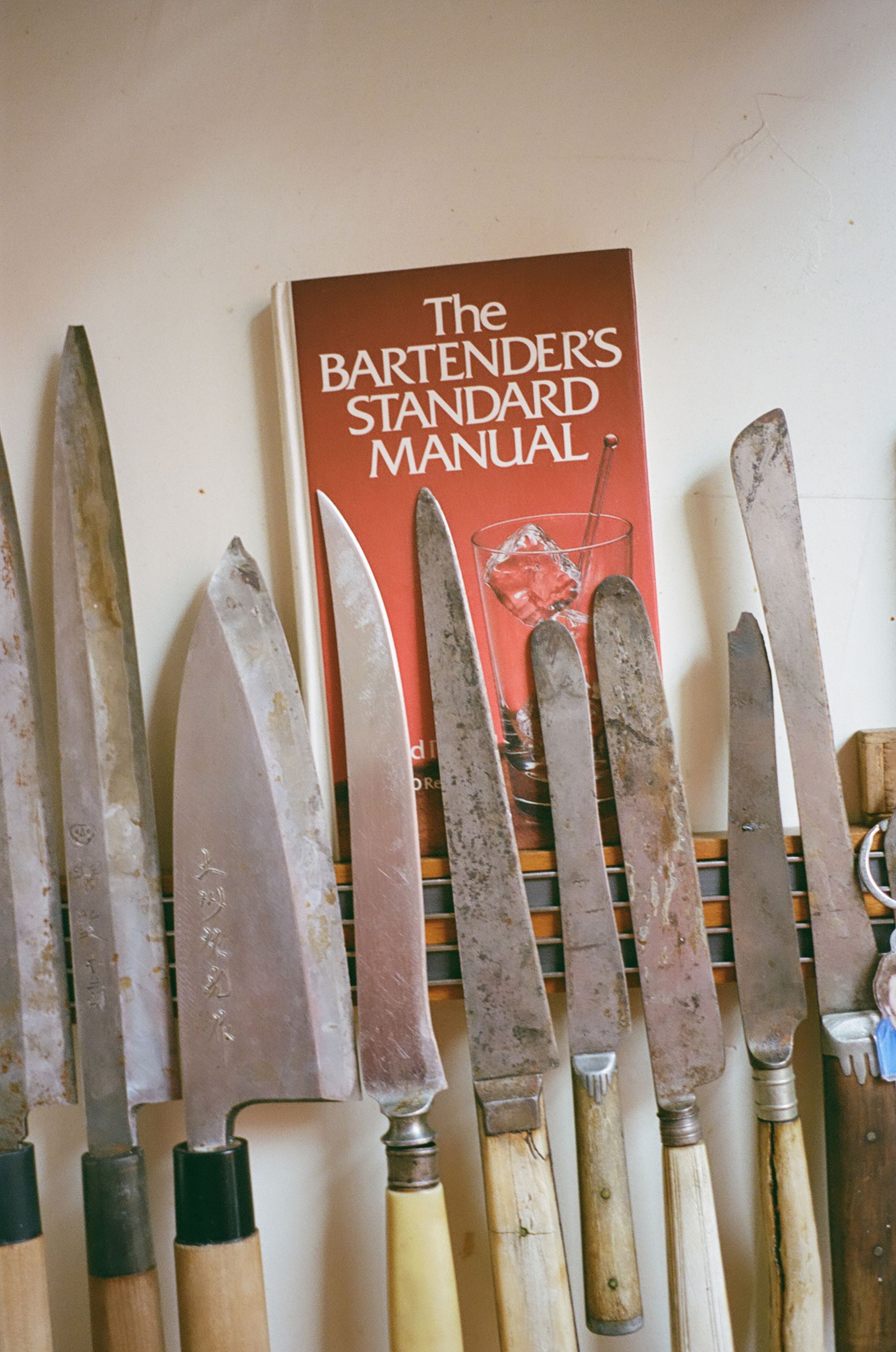
Drinks are very much the medium for many social interactions. And they've become—for better for worse—genre and era-defining in ways. Now there's all the hullabaloo about the martini's return, which has never gone away. But they really define spaces in a lot of ways. Restaurants really take ownership of that. They become the medium for conversation and relationship building. Is that something that interests you about beverages?
I think it did, at a certain point, but I think it was a social crutch for me a little bit. And I think now I don't know that I really want that or need that. So maybe, I don't know, I think I probably would have answered that question differently even a year ago.
Honey's had non-alcoholic options as well?
Yes. I do have a martini, though, that is on the Honey's menu. That is a martini that has evolved from my time at Dimes...It's called the ocean martini. At Dimes — and they still sell it at the deli—they have the Quinton hypertonic, which is derived from an algae bloom in the Pacific, super clean, nutrient dense ocean water. We started making a really simple clean dirty martini with the Quinton hypertonic. So you would lift the hypertonic up—this little glass ampule —the sea water would come out, and you'd have this beautiful, really simple martini. A lot of dirty martinis are filled with food coloring from olive juice, and it's nasty stuff. That was the initial inspiration. But then at Honey's, what I decided to do is go out to Montauk. I would go out with a five gallon bucket to a spot that I found, and would go out on the pier and get 10 gallons of seawater and bring it back to Brooklyn and serve it in martinis. We would pasteurize it, but it turns out that it's also really shelf stable because of the salt content. I think in my time at Honey's — and it's still being made — we drank hundreds of gallons of seawater.
I remember once coming to Honey's and you being like, "gotta go" with your buckets...
Yeah because I really love foraging for things and collecting things. There's something really nice about the ocean martini. I think about presence-ing the ocean in our daily lives in a way. I think it's this thing that's really taken for granted. So, the ocean martini is still evolving. You guys saw that book "Eat Like a Fish" that was on my table? I'm thinking about other ways to think about it as a vessel for furthering and exploring climate impact—climate positive food.
I think in my time at Honey's we drank hundreds of gallons of seawater.
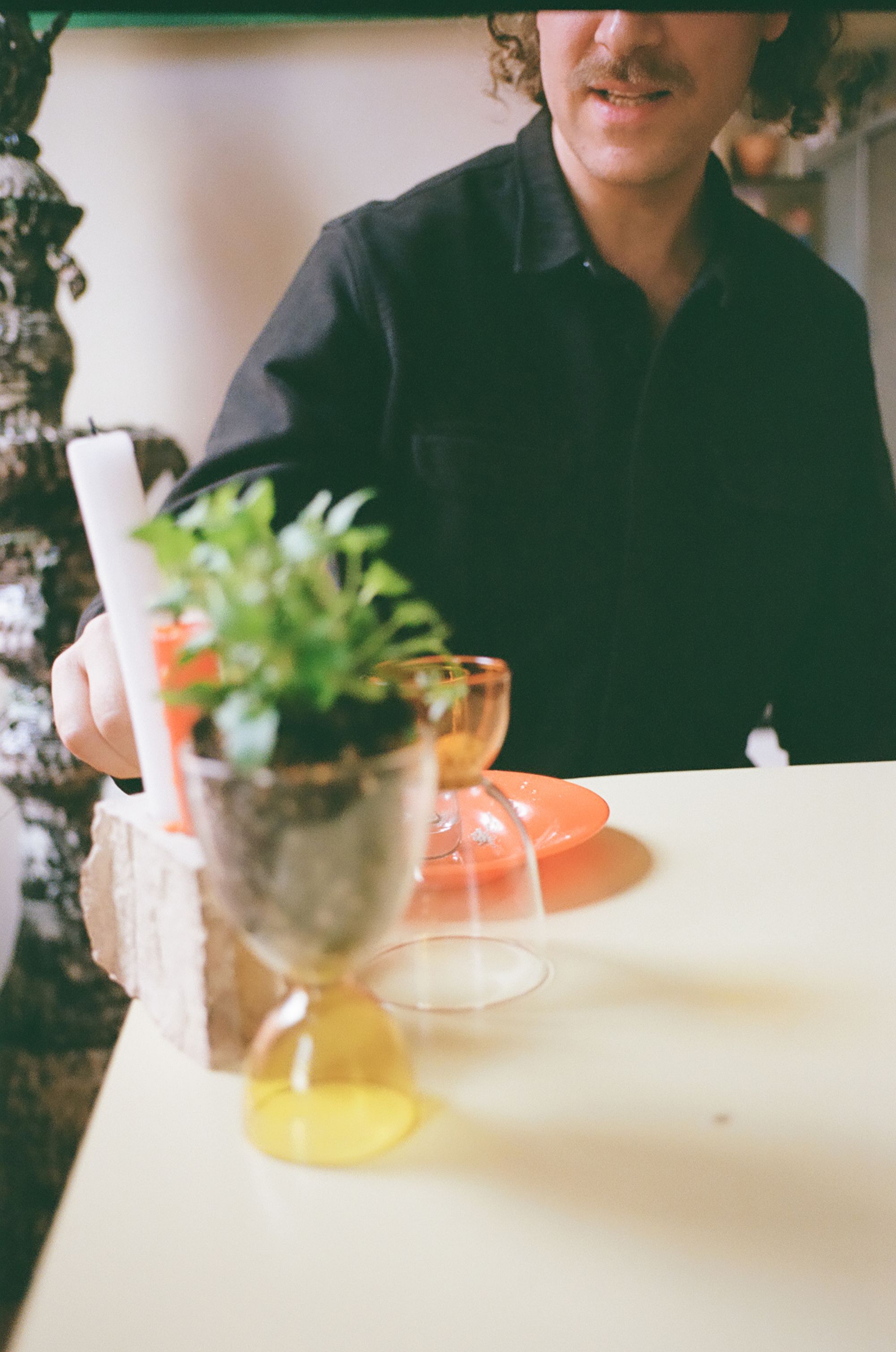
So we've charted how you ended up at all of these places along the way. And today, you've kind of stepped back from Honey's a little bit. So, you're focusing on Mamo which has glassware and also is expanding into other home goods
Yeah, we've started with glass and I think we'll stick with glass for a little bit. Now we have different shapes and silhouettes: a coupe and a high ball. Then we're going to start branching out, hopefully making flatware and ceramics, and really just be more of a home goods brand. But we want to design everything ourselves and figure out the manufacturing for each thing and figure out where to make stuff. We will learn as we go a little bit, so we're just taking it slow.
In so much of what you do your handiness and your approach to constructing a drink or a space is very DIY, and the path that you've taken with your practice is pretty unique. Is there any model for what the larger project is? Any mentorship? Or other practices that feel resonant to your own?
Oh, interesting. No, I don't think so. Sometimes I feel a little bit lost, honestly, because it's self generated. But I mean, I feel like I find so much inspiration in other people working in food and beverage, other artists I know. But I don't think I really have a mentor in that sense.
Yeah. I mean, I feel like in New York—in our version of the art and culture world—there's such a mandate to narrowly define what it is that you're doing complexity isn't always embraced. But seeing your practice has always been really inspiring, because it allows for many different capacities to co-exist. And collaboration seems also very, very central to that.
Yeah. I love working with other people on projects.
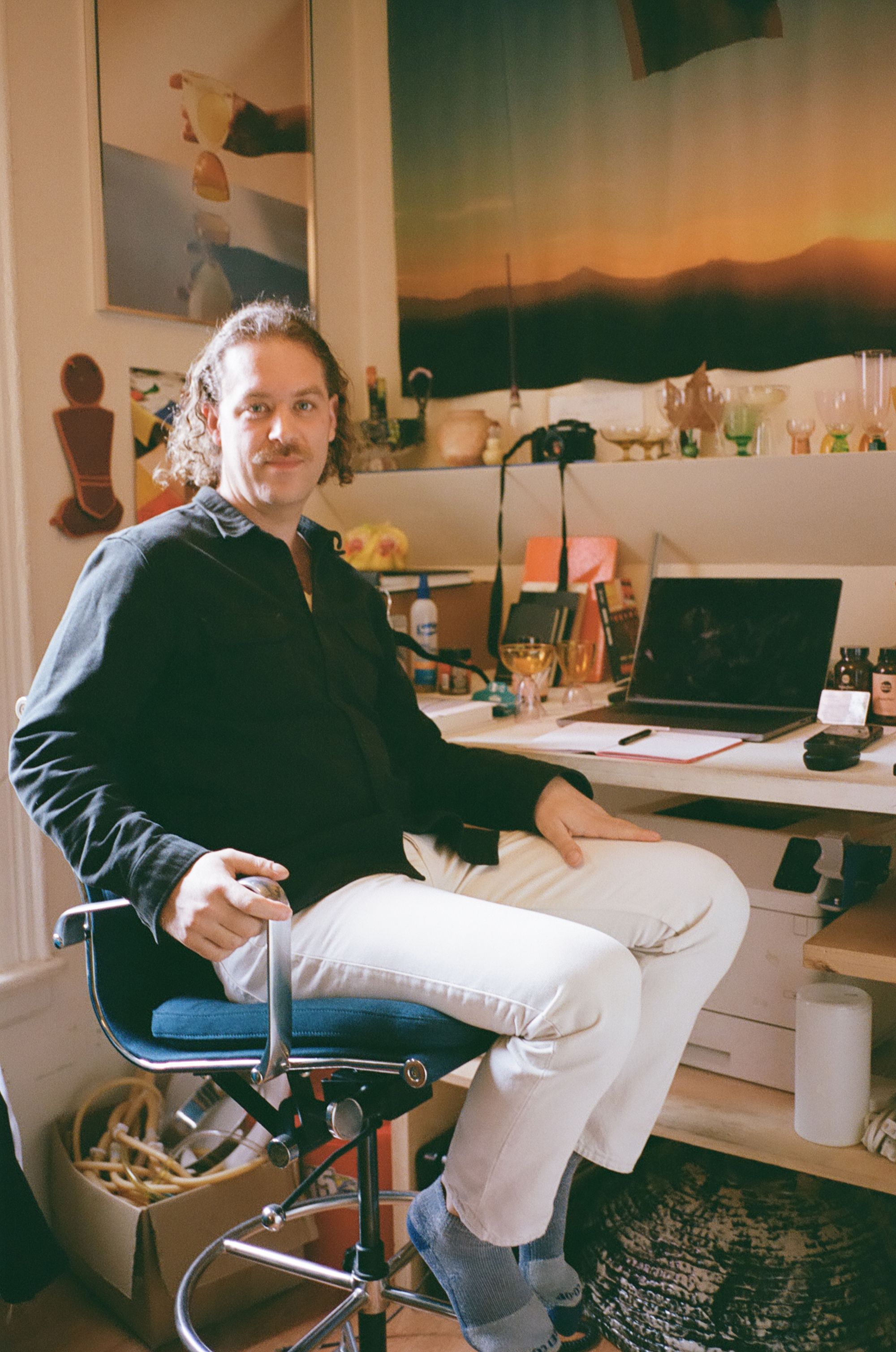
I feel like a lot of artists are balancing the commercial aspects of their work in bifurcated ways where they might not be in conversation with one another. Is there other work that you do that feels more behind the scenes? Is there anything that feels outside of the realm of the practice? Is the business-crafting something that you're actively interested in?
Yeah. It is something I'm very interested in, and I really enjoy. You know, bartending or serving in a restaurant used to keep me stable financially, so I could work on other projects that maybe I didn't want to put financial responsibility onto.
I feel like the ocean martini feels like an encapsulation of that in some way where it has this durational register to it. It involves you going to another place, and sourcing something in a very tactile way.
Yeah. And it's also spun out a bunch of other ideas. I have a lot of ideas. And sometimes it's hard to know what's an idea worth pursuing.
What's the worst idea that you've had?
You know, I do it on my phone. I keep a running list of ideas. And I'm sure if we looked at it, there'll be some bad ones. I don't want to look at my phone right now.
No, no. Absolutely not. Is there a part of your practice that takes up a lot of your time that people might not know about?
I mean, aside from like, just email labor? It's so time consuming. That's actually part of the reason why I'm trying to not do events that much right now. One event will derail my time for a month. I like to walk a lot, especially walk around Chinatown, and look at stuff in the markets. There's a real seasonal flow to things here that is not connected to New York seasonality. Persimmons are only available for a couple of months. Longan has the same kind of period, but it's cyclical. Things come and go, but they're not connected to seasons in New York.
Does it feel like some supply chain thing?
I think it's connected to seasons in the countries where this stuff is grown.
Is there any ingredient or object that anytime that you see it on the street, you stop immediately and buy it in bulk?
Oh, well, I love longan. I love persimmons and pomegranates. Those are my three things I try to eat a lot of.
Do they become the material for the beverages?
Yeah. Also, when I was just making cocktails, walking around the markets in my neighborhood, there were things that I found inspirational all the time and flavors that are unusual. I could put together an original cocktail for an event without having to use ingredients that were available at Astor Wines.
Right. I feel like your beverages have a very signature feel to them. Color really comes out in a lot of ways, and texture. I remember something that you made with maybe like tomato seeds or basil seeds. How would you articulate that aspect of your approach?
Multi-sensory. I really like to play with scent, and also there is a serious visual element, and with the addition of the glass, you get this sculptural thing. I am really thinking multi-sensorially, and trying to make a drink to engage as many senses as possible.
Do sound or other environmental inputs ever play a role in that?
I haven't really incorporated sound exactly. Although, at the Pioneer Works Supper Club that I did with Emma McCormick Goodhart, she had this great idea to put contact mics on the tables and hidden around — and it was on Montez [Press Radio] — so we got a lot of interesting sound from that.
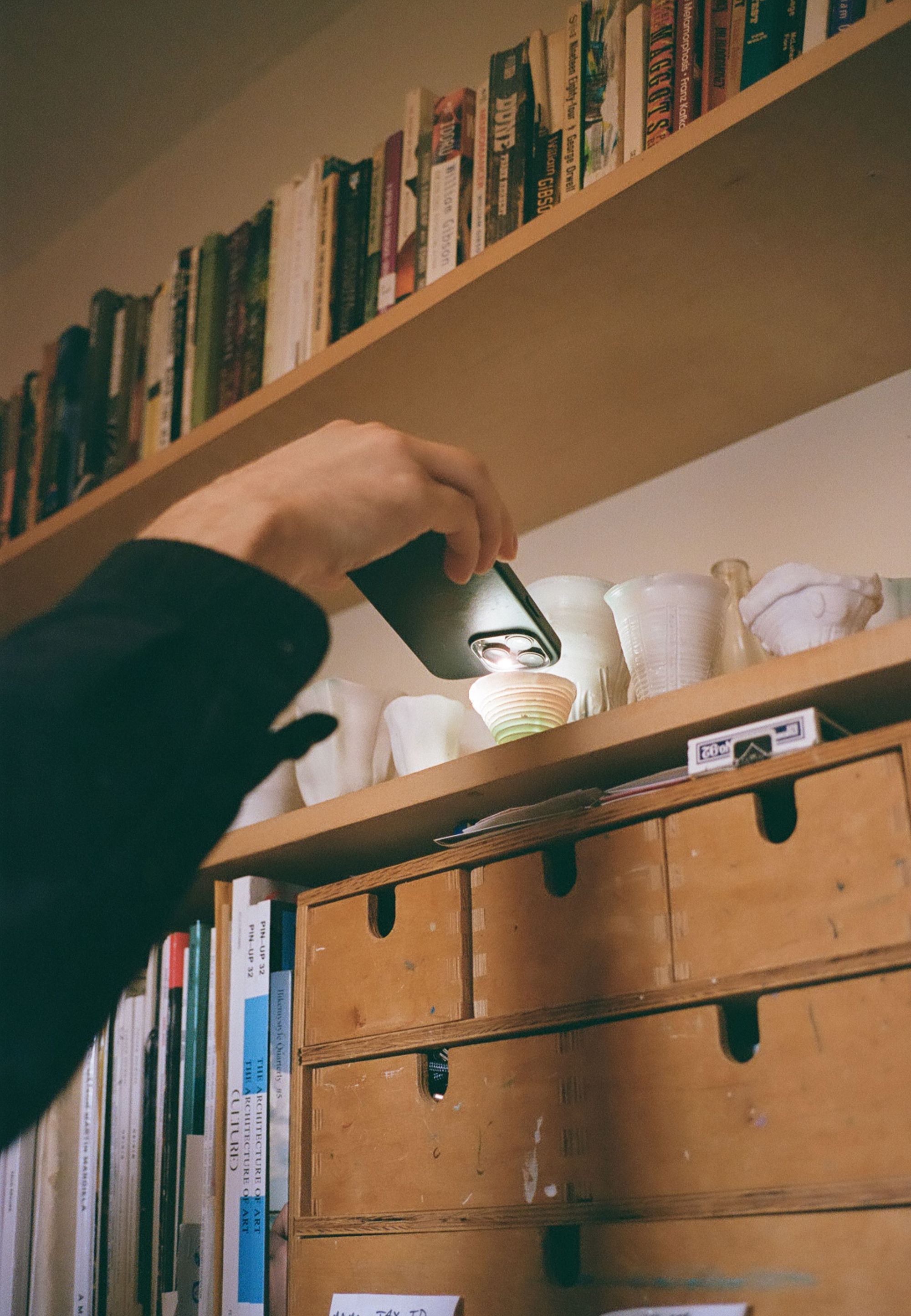
What is your dream scenario? Or dream environment where people would be engaging with your work?
I've been consulting on this hotel project in Hudson and part of it is a spa. I've been getting really excited about what you would consume in the spa.
That's something at a very large scale that you've never done before. How did that opportunity arise? Are they inviting you to do 'the Arley thing'?
Well, it's friends. They needed help conceptualizing their food and beverage program for the property, which has a restaurant, bar, club, spa, dining, outdoor spaces...
The whole nine.
We did a series of exercises, which was high level concepting. What's our fantasy of how this place like this should operate? And then we started, part of that got handed off to a kitchen designer to actually design the back of house spaces. And then, because I'm working with Mamo and we're starting to design products, I really wanted to have a hand in actually designing their glassware, flatware and ceramics. I think this is also a really good opportunity for us to make new things. Maybe not put it out into the world just yet, but to prototype and to test it in an environment at scale.
I seems like in a lot of the projects that you're working on, you have these pretty wild scale shifts. You have a basil seed, or a scent on the rim of a glass. Then you're also zooming out and thinking in a systems scale way with a hotel. Do you kind of favor one way of working over the other?
This is a really good example.... the other day, I'd seen this coat hanger in Milan during Design Week. I snapped a picture and then we found the manufacturer, but it was going to be complicated: they wanted us to sign a contract before they even sent us a sample because it was something that he didn't make anymore. Then, all of a sudden, we didn't really have an option for a coat hanger at the hotel. I spent three weeks looking at coat hangers in my spare time, and there's just really aren't any good ones. Except for this guy Andrew in LA who is making really beautiful ones, but we can't afford them. So I was just thinking about coat hangers, and I drew this line and was like, "Oh, wait, you could do a coat hanger with a continuous line." I drew it on a Monday, and I hired a guy. I'm also learning these 3D programs, but I'm not really good at it. So it'll take me three days to draw that line in CAD. Instead I hired a guy on Fiverr with a one day turnaround, rendered it, made adjustments, and output it. I put it up to try to get a request for a quote to have a sample today. Okay, so within a week, you are already prototyping a thing. I really like working that way. I feel like I can really like do it quickly and immediately. I love the immediacy of cocktails. I'm making a thing, and you're consuming it. We're done. With making these products, it's a little more drawn out. But, I really do like that playful, creative, immediate output.
I love the immediacy of cocktails. I'm making a thing, and you're consuming it. We're done.
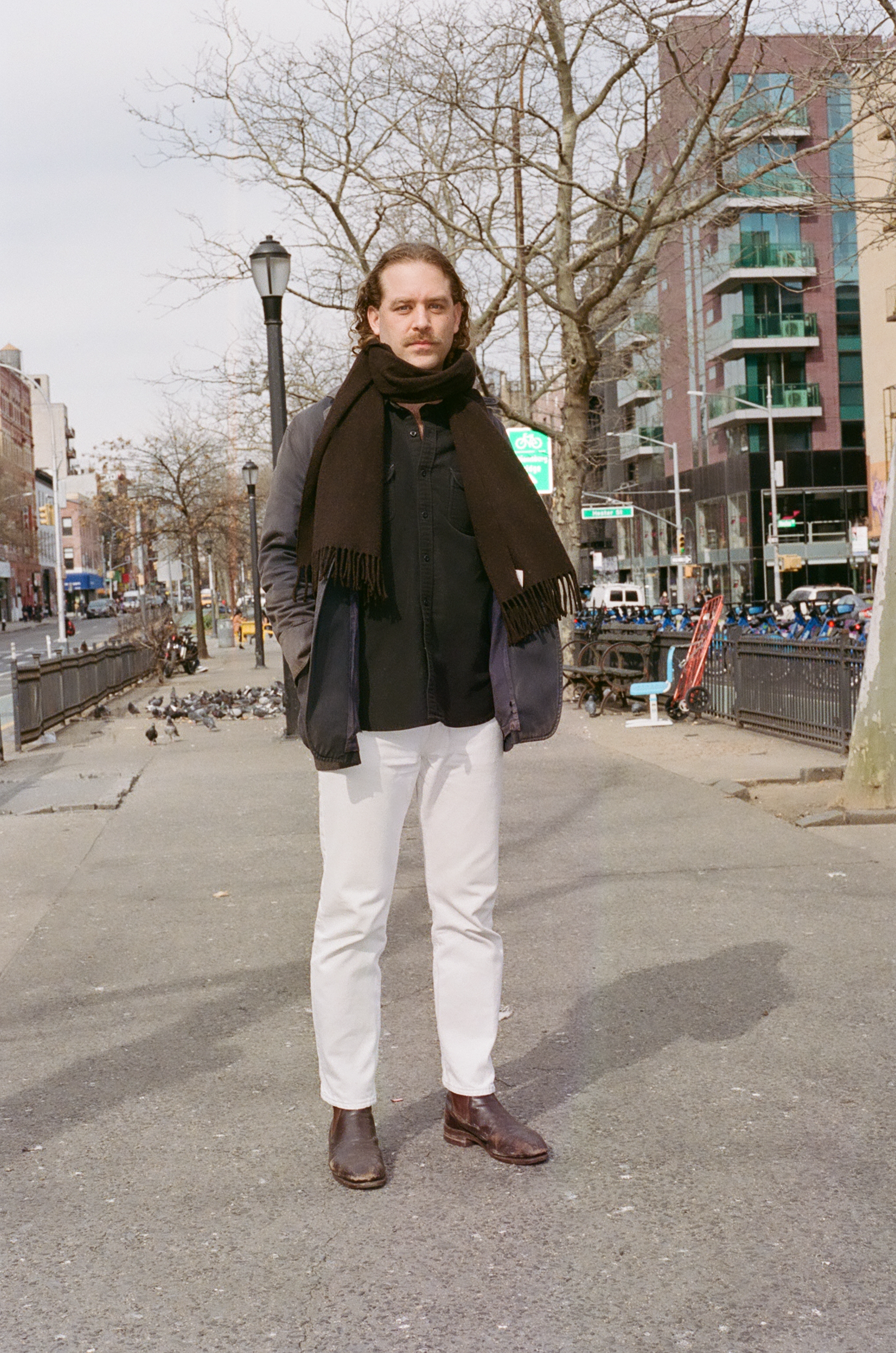
Is there one part of the job that you feel the most passionate about? Or do you like the spread?
I like the spread, but I think I'm also learning to be a little more patient and take more care and time and not be so "get it out" and "get it done."
I mean, there are aspects of the work that I do to support my practice where I'm like, "I wish I could just do this one thing and be a diva about it." I can't really afford to.
I don't really have one thing, and I really like doing a lot of different things. Also, I really like working with my hands, and I wish I had more opportunity to do that. I do feel quite energized by it.
Maybe less emails.
Yeah less emails. This is the promise of AI though. Right?
Is there a next phase or project beyond the hotel that you're excited about?
Yeah, there's a idea that I'm really excited about. But I don't really know if I'm ready to talk about that. Sorry for the tease.
No, I think closing out on an enigma is good.